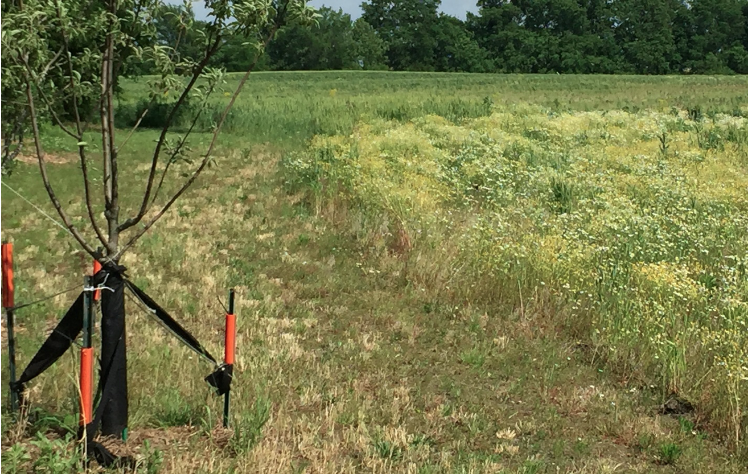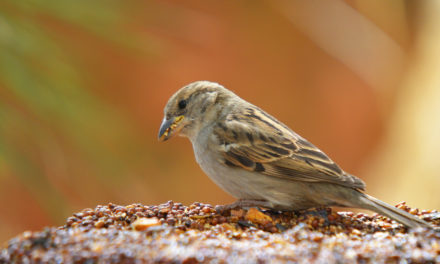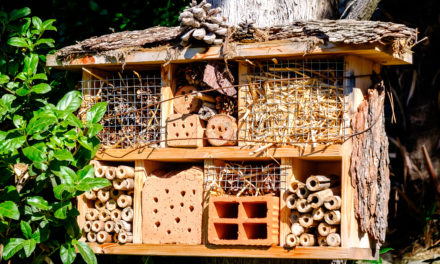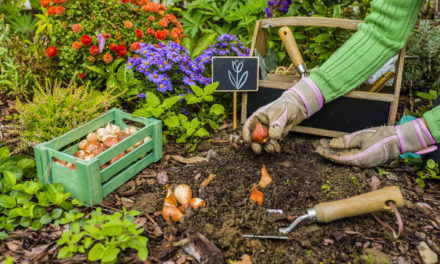
This is a photo of the kindest act any farmer has done for me. My new plot of ground is long and narrow with the house and gardens surrounded by fields that are sprayed with chemicals regularly throughout the growing season. I am going to work with and not against these hardworking farmers who do their best to raise a crop to support their families.
In spring, I was working in the gardens when I noticed the spray rig behind my neighbor’s tractor. I ran to start covering my organic spinach in the cold frames and the broccoli in the raised bed located at the edge of the farmer’s field. I took some before photos just in case. I made sure to wave as he made the next pass to lay down the broadleaf herbicide that would take out all the weeds before they were turned under. I waited for days to see what my losses would be when, much to my astonishment, there was none. A full swatch of the field adjoining my land was still lush and green! The farmer had chosen to give my garden a wide berth and hadn’t sprayed the area that might have drifted weed killer over my ground! The kindest act of any farmer in my lifetime. It gave me hope that we could coexist and I would not have to give up organic gardening at the new site.

Chemicals are a necessary part of modern farm techniques. I watched the weeds in the non-sprayed area take over that section of the field, and I gained a new understanding of the importance of weed control to the modern farmer. I am not advocating for chemicals, but rather for an open mind to tolerate what must be done to maintain the overworked soils of most farms. Yes! I strongly believe in Joel Salatin’s approach to farming. His method uses crop rotations and no chemicals, but I have not seen it succeed on the scale needed to feed the world. I am a realist. Modern farming practices are here to stay.
Finding ways to coexist is the real issue. I have a master plan to protect my land from the chemical overspray, like moving these Rose of Sharon bushes to protect the south garden.
However, if they ever decide to use herbicide Dicamba, I am sunk. When Monsanto created genetically modified versions of soybeans and cotton, it was proclaimed a modern-day miracle that allowed plants to tolerate the chemical herbicide while killing all the weeds. The “Round-Up Ready” fields unfortunately, have now developed a tolerance to Round-Up and the farmers are searching for new herbicides for weed control. Dicamba is an older herbicide that has always been difficult to control. Its ability to evaporate from the soil or plants where it is sprayed, forming a vapor that can drift for miles, makes it more deadly than other herbicides. Dicamba has set off a firestorm of protests as it damaged over one million acres of neighboring crops in one area of Tennessee in one season. Even the reformulated new “low volatility” mixtures are less than desirable. Dicamba has also been the cause of extensive damage to woodland areas.
While this weed killer affects all trees and wild plants as it drifts over from nearby farm fields, some tree species are more sensitive than others. The most affected by Dicamba include sycamore, cypress, Bradford pear and white oak. An old-growth stand of cypress or oak may be permanently destroyed by just one application of this chemical that Monsanto insists is safe “if used properly.” Do you want to trust a lifetime of hard work to the hands of a giant chemical company? Fortunately for me, the farmers around my land are well-informed on the dangers to Dicamba an ensure me they will not use it.
My long-range plan calls for planting a series of “catch bushes” strategically placed to take the brunt of the chemical overspray. I also want to create a system of hinged metal panels on poles. These can be opened or closed to protect my gardens from the spray and the intense winds coming off the prairie down the road. For now, I am at the mercy of the neighbors who are choosing to be thoughtful and kind. Life is good, even when there are challenges!
Be blessed. Be happy.
Ann May.






